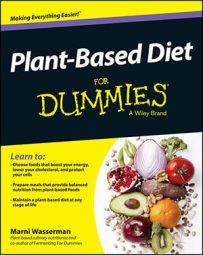You can swap out plant-based ingredients for some of your favorite and most comforting ingredients. You may be at a loss and wonder how it’s even possible to find a plant-based alternative to certain foods. Following are some common ingredients and what the main go-tos are in the veggie world.
Milk substitutes for plant-based eating
Luckily you can find a plethora of non-dairy milk alternatives, which are available at stores or easy enough to make at home. Some varieties include almond, rice, hempseed, coconut, cashew, and Brazil-nut milk. You can easily substitute these (in equal measurement) into any recipe that calls for milk.
Choosing alternative milk doesn’t mean you’re missing out on calcium. Many nutritious plant-based foods, such as almonds, kale, and bok choy, are loaded with these nutrients. They’re not just found in milk!
Substitutes for eggs in a plant-based diet
People are often nervous about how to substitute an egg. “What’s going to give that muffin its ‘stock’ if there isn’t an egg?” you may be worrying. Well, you have more options than you likely think you do!
Try these; each makes the equivalent of one egg:
Three tablespoons of ground flaxseeds or ground chia seeds plus six tablespoons of water (soak for five to ten minutes to allow the mixture to become gelatinous)
1/4 cup pureed banana
1/4 cup apple sauce
Meat substitutes in a plant-based diet
Meat is out on a plant-based diet. For a hearty, rich texture and something that fills you up, the main plant-based items to stock up on are tempeh, tofu, beans, and portobello mushrooms. Each of these items has a hearty, chewy texture, and you can marinate them in pretty much any sauce.
You can also chop them up, grind them up, or use them any way you would use meat: as burgers, in stews and chili, or just baked on your plate.
Cheese substitutes for plant-based eating
This is usually one of the most difficult items for people to give up. Most people are addicted to cheese. The good news is that the plant world offers creamy, soft textures that are rich and decadent and can be used in place of cheese.
Here are some favorites: sliced avocado, soaked and blended cashews, sprouted soft organic tofu, and nutritional yeast. All of these can be added to pizza, quesadillas, tacos, sandwiches, and other dishes that need a “cheesy” flavor.
As for store-bought cheese, the Daiya brand is becoming quite popular in homes and restaurants, as it’s the closest thing to cheese that the plant-based world has been able to come up with so far. The other benefit is that it’s not soy-based.
(Most non-dairy cheeses are overly processed versions of soy, which can be harmful to your health.) It’s still technically a packaged food, so keep your consumption to a minimum (such as during those times when you have a serious craving, and nothing else will do).
Avoid soy cheeses and rice cheeses, as they’re extremely processed and don’t quite hit the spot. Also, these options sometimes contain trace amounts of dairy.
If you find it really hard to give up cow dairy, just know that choosing sheep-milk and goat-milk cheeses can be an option as you’re transitioning. They’re lower in lactose and easier to digest, and from an ethical standpoint sheep and goats are treated much better than cows in the food industry.
Plant-based thickeners
Ever wonder what holds your meat gravy together? You probably don’t want to know. Even cornstarch, which is plant-based, isn’t good for you because it’s likely genetically modified. So go for arrowroot powder, kudzu, or tapioca. Each of these items makes your sauces and puddings gooey from natural sources.
You can find these items in most health-food stores or grocery stores in the baking section.
Mock meats
Textured vegetable protein (TVP) is a byproduct of soybean oil and is used as a fake meat. You can find all sorts of “meatless meats” out there right now.
Although they’re technically plant-based because they don’t have animal products in them, they are processed foods with loads of additives and aren’t something recommended when you need a meaty fix. Don’t eat the mock versions of foods; stick with the meat alternatives already mentioned.

